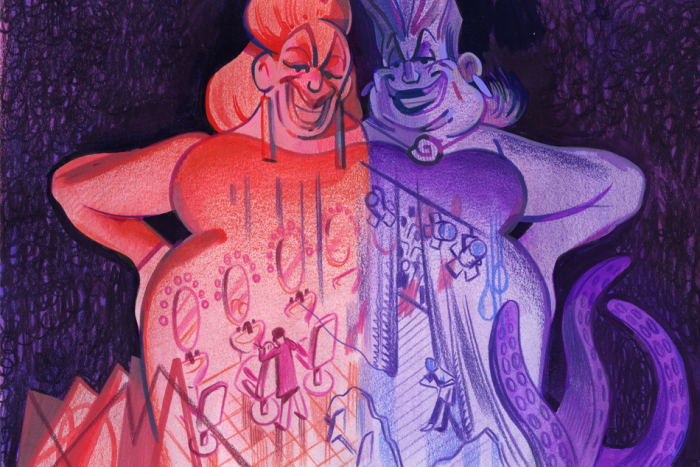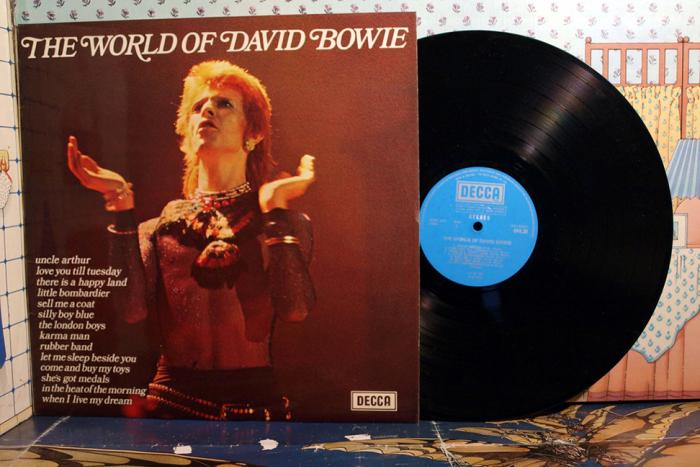On December 16, 2012, a group of men on a bus in New Delhi brutally attacked twenty-three-year-old Jyoti Singh Pandey and the male friend she was traveling with. Jyoti was raped and later died of her injuries, and her friend was badly beaten. Jyoti’s death sparked massive protests in Delhi and around India, igniting a national conversation about the rampant sexual assault and harassment experienced by women there, and the underlying issues of gender inequality that affect the entire country. In the weeks following Jyoti’s death and the arrests of her six attackers, Delhi residents—young, old, students, men, and women—demanded better protections for women and stricter penalties for sexual violence, including a silent march of university students and a 4,000-person rally at Jantar Mantar, the city’s “official protest street.” The attackers were sentenced to death, a rare decision in India, and in 2013 the government passed an anti-rape bill that introduced more severe punishments for rape, criminalized stalking and voyeurism, and set the age of consent at 18. But for women in Delhi, often called the “rape capital” in the media, harassment is still a daily occurrence; a 2010 survey of women in the city found that two out of every three women reported facing incidents of sexual harassment that year, and that ultimately the onus remains on women to keep themselves safe by “not visiting certain places, staying indoors after dark, maintaining a dress code, and carrying pepper spray and safety pins etc.” In an interview with NPR following the protests, Delhi-based feminist activist and secretary of the All India Progressive Women’s Association Kavita Krishnan said: “In India we are continuously told, ‘You are the nation's women. You are the nation's daughters. You are the nation's mothers. And therefore, behave yourself because Indian women behave themselves.’”
These ideas about what Indian women should and shouldn’t be, or what they should or shouldn’t do with their bodies and their time, are upheld in the political, social, and cultural fabric of the country, especially in the Indian film industry, which has long promoted conservative images of love, sex, family, and nationalism, exacerbated by an aggressive censorship board that cracks down on images and plot points deemed too “racy” for national audiences. At the same time, stereotypes about “good” and “bad” women pervade Indian popular films and television—“good” women are modest in their dress and behaviour, and don’t go out looking for a good time. By contrast, women who appear in public by themselves or in the company of men are portrayed onscreen as “loose” and suspicious. These fabricated ideals of chaste romance and blind patriotism stand in stark contrast to the real-life horror of December 16 and the raised voices of Indians who are breaking their silence on gender inequality and calling for cultural change.
*
In Censorship and Sexuality in Bombay Cinema, Monika Mehta writes that the restrictions on acceptable content in India rely heavily on conservative stereotypes of women as chaste and submissive. In an article published in the South Asian Popular Culture journal this year, Sukanya Gupta argues that historically, women in Indian cinema are often relegated to archetypes, most notably the “noble sufferer” of many 1950s and 1960s films, and the 1990s “New Woman” who expresses her sexuality but is often punished for her behaviour.
In the 1950s and 1960s, more serious “social films” were common, such as 1962’s Sahib Bibi Aur Ghulam (The Master, The Wife, and the Slave), about an alcoholic woman, 1959’s Sujata, about a relationship between a Brahman man and a Dalit (untouchable) woman, and Pyassa (Thirsty), a 1957 story about a love affair between a poet and a sex worker. But in the 1970s and 1980s, the social film fell out of mainstream fashion in favour of action-adventure stories embodied by the biggest star of the day, Amitabh Bachchan. Independent filmmakers took up the mantle of tackling social issues onscreen in art-house movies—Shyam Benegal’s tragedy of caste and class Ankur (The Seedling) in 1974, Mrinal Sen’s story about a film crew arriving in a Bengali village to document a famine in Akaler Shandhaney (In Search of Famine) in 1980 and, a year later, Adoor Gopalakrishnan’s Malayalam film Elippathayam (The Rat Trap) about life in feudal Kerala. Many of the art-house directors of the 1960s and 1970s showed their films abroad, winning awards at Cannes and the Berlin Film Festival before returning to India, often without the support of government distributors. Art-house films were subject to approval by India’s national censorship board, but their directors benefited from governmental funding for independent cinema introduced in the 1960s, and the Censor Board was focused mainly on documentary films and large-scale productions that explicitly targeted the ruling governments or showed sexuality onscreen.
High rates of poverty and illiteracy, particularly in rural areas, disproportionally affect India’s women.
Today, Bollywood is booming: the industry released 1,724 films in 2013 (compared to the U.S, the second-highest producer, with 738 films) and is rife with family dynasties in acting, directing, and producing. In Indian cinema, this is important; for much of India’s film industry’s history, there has been a long-established connection between the kinds of women who get into acting, and the roles that they play.
Following two decades of Bollywood action blockbusters such as the Dhoom franchise in the 2000s, and family-centred romantic epics like 1998’s Kuch Kuch Hota Hai (Something Happens), there has been a resurgence of independent cinema in India, helped by globalized filmgoing audiences and cheaper digital production costs. Indian filmmakers today are taking advantage of globalization by presenting their films abroad at film festivals, gaining international attention before bringing their films to the subcontinent. This has raised the profile of Indian filmmakers abroad and has also helped form local independent film festivals in small towns across the country and, as recently as this year, Mumbai’s FilmBay, a space dedicated to art-house cinema for the twenty-first century funded by the federal government. In this re-emerging independent filmmaking arena, a new generation of socially-minded men and women are exploring the changing nature of Indian identity away from overbearing studios and the pressure to fit the gender stereotypes present in mainstream Bollywood movies.
*
After the 2012 attack on Jyoti, British filmmaker Leslee Udwin made India’s Daughter, a documentary in which she interviewed one of the accused attackers. The film drew criticism for its approach to the subject; Krishnan and journalist Tanvi Misra both argued that the film was patronizing in its treatment of Jyoti as the titular symbolic child instead of an individual with autonomy. When the Indian government banned India’s Daughter from screening in March 2015, the question was raised again: has anything actually changed for women in India? Films like India’s Daughter, and ongoing news coverage of attacks on women in India do help raise awareness around the world about the serious problems faced by women in the country, but are made from an outside point of view and largely ignore the cultural and political contexts of violence and misogyny.
Parineeti Chopra confronted an audience member who mentioned “bodily exploitation” as part of marriage, saying: “there is only one word for that: rape.”
High rates of poverty and illiteracy, particularly in rural areas, disproportionally affect India’s women. There are great gulfs that exist in the education levels of India’s young people that are dependent on their gender, ethnicity, location, and access to schooling. Sex education varies widely from state to state—in 2007, many states ended sex education in school after opponents claimed that it was counter to “Indian values.” In a 2009 study, more than 50% of rural girls did not know what menstruation was, compared to only 6.7% of girls in urban centres, highlighting the huge gap in education that persists when it comes to reproduction and sex education, and the difficulties that education advocates face when deciding how to even start talking to young people about their sex lives. 2014 estimates published in the Lancet indicate that the rates of reported sexual violence in India are among the lowest in the world, but that is in part due to a lack of reporting and the fact that marital rape is not illegal in India. Of rapes that are reported, adolescent girls “account for 24% of rape cases in the country although they represent only 9% of the total female population.” Only 1% of women report sexual violence to police. In 2011, a report called Evolving Men analyzed survey results from 8,000 men and 3,500 women aged 18-59 in Brazil, Chile, Croatia, India, Mexico and Rwanda to determine how gender inequality affects quality of life around the world. In their survey of 1,534 Indian men, the authors found that 65 percent of men surveyed agreed with the statement: “There are times when a woman deserves to be beaten,” and 61 percent of Indian men surveyed agreed with the statement: “Men are always ready to have sex.”
The authors of the study found that gender equality education does not only happen in school; popular culture plays a critical role in showing non-traditional lifestyles within traditional contexts, allowing viewers to see themselves reflected in the narrative while raising questions about long-held assumptions and values.
*
In 2013, the actress Mallika Sherawat, known for playing sex symbols, was publicly quoted saying that India was a dangerous place for women. At a press conference following the statement, a journalist accused Sherawat of being unpatriotic and of contributing to India’s bad reputation abroad regarding women’s rights. Sherawat responded by saying that Indians, and Indian women especially, have a responsibility to talk about the issues instead of pretending they don’t exist, and called on other women to stand with her. At a 2013 panel held by the filmmakers of Shuddh Desi Romance (SDR), in which the film’s actors presented research on ideas of romance and sexuality among young Indians, Parineeti Chopra confronted an audience member who mentioned “bodily exploitation” as part of marriage, saying: “there is only one word for that: rape.”
In the trailer for Angry Indian Goddesses (AIG), by Indian director Pan Nalin, a group of seven women cavort through the Goan seaside, all legs and sunglasses and beautiful hair, as words flash across the screen: women, girls, bitches, victims, angels, killers. A final phrase appears: “seven women who are on the edge, and are very, very angry.”
Viral videos have been released mocking the censorship process as outdated and overzealous.
In addition to Angry Indian Goddesses, which won a runner-up prize for People’s Choice Award at the 2015 Toronto International Film Festival, films such as Leena Yadav’s Parched (2015), about women living in a village in rural India, 2014’s Queen, a dramedy about a woman left at the altar who decides to take her scheduled honeymoon by herself, and 2013’s SDR, a song-and-dance film about a couple that doesn’t want to get married, put women’s anger front and centre onscreen. The new films are distinct from earlier work in that they “are not [specifically] ‘issue-centric,’” says Sangita Gopal, author of Conjugations: Marriage and Form in New Bollywood Cinema. “But they do attempt to reflect social change outside generic formulas.” In SDR, the marriage economy is presented as outdated, restrictive, and ultimately bad for young people. In Queen, women travel and live alone, straying from the idea that they need protection at every turn and that the world is an inherently dangerous place. This September, Vaibhav Sharma highlighted new Indian films for The New York Times, such as Court and Masaan (produced by Phantom Films, the same company behind Queen), which are gaining popularity in India and abroad, for their commitment to stories that purposely avoid the sheen of Bollywood.
AIG highlights the roadblocks women face when trying to report sexual violence to the police, even when there are some laws in place. Even Bollywood players behind and in front of the camera have lent their voices to fights for women’s rights: Parineeti Chopra teamed up with Whisper sanitary products to end taboos around periods in India, the Mumbai Women’s International Film Festival, while on hiatus for 2015, is poised to celebrate its third year of highlighting women’s contributions to Indian cinema, and social media campaigns like #HappyToBleed have gained international attention. Clips of actresses calling out journalists for ignorant behaviour regarding women (like their Hollywood counterparts) go viral and spark debates about feminism on entertainment TV. The rising influence of women in Indian film has been crucial to how their stories are told on and off-screen, putting more power into their hands.
*
For all this progress, the issue of censorship in the Indian film industry still limits the conversations around taboo subjects in film. Censorship has existed in the Indian film industry in one form or another since 1918, when the British Colonial government passed its first Cinematographic Act. Initially put in place to prevent Indian audiences from viewing Hollywood movies, different iterations of the censorship governing body have focused on controlling the depictions of risky behaviours over the past hundred years. Today, the guidelines of the Censor Board, known formally as the Central Board of Film Certification, state that the board members will ensure that a film “is examined in the light of the period depicted in the films and the contemporary standards of the country and the people to which the film relates provided that the film does not deprave the morality of the audience.” Moral depravity is a subjective category, however, and for the largely conservative Censor Board, it often manifests in situations and characters that challenge conservative ideas. This protectionist sentiment is an integral part of the continued censorship of Indian films and foreign films released in India, even as more Indians are able to access original cuts of foreign films online.
In the face of these issues, Indian filmmakers, actors, and spectators are fighting back. Following AIG’s Indian release on December 4, a video featuring every censored scene in the film was published on its Facebook page. During the 2013 SDR panel, Chopra emphasized the need for people in India to talk about social issues instead of allowing outsiders to stereotype citizens as ignorant. In recent weeks, film students at the Film and Television Institute of India have battled the chair of the Censor Board over the banning of films critical of the Modi government, and viral videos have been released mocking the censorship process as outdated and overzealous.
Even before the Censor Board sees the film, independent filmmakers face roadblocks, especially when it comes to funding a film on their own terms. To make Parched without compromising on content, Leena Yadav had to borrow money from friends, her husband (who also produced the movie), and other private funders. “It was very difficult to raise funds for the film,” she told me. “The audience is there, but there is no financing.” Nalin echoed those sentiments at the Angry Indian Goddesses TIFF premiere, telling the audience that he hadn’t been able to secure financing in India for years. In an interview with Screen Daily, he says: “When you go around in India to finance a project like Angry Indian Goddesses the reality hits you hard... most [men] believe that films with women in the leads do not do well at the box-office.”
Despite its small budget, Queen swept the 2015 Filmfare Awards and the National Film Awards and grossed ₹97,41,80,000 worldwide in 2014. SDR earned ₹75,11,80,000 at the worldwide box office. At TIFF, Parched added a fourth screening due to high demand from audiences. Distributors in Europe and India have picked up AIG, and Yadav says that she is looking for distribution for Parched in North America. Filmmakers and actors are also acutely aware of the importance of reframing and reclaiming the narrative of women’s subjugation in India through telling women’s stories in pop culture. In an interview with iFilmCafe at TIFF, actress Tannishtha Chatterjee, who starred in both AIG and Parched, says that Indian filmmakers who “always had the talent and the knack to tell very different kinds of stories are now also somehow finding the money and support for doing that.” By proving that women-focused films can win at the box office, she says, things are “changing and shifting in Indian cinema.”
Sukanya Gupta writes that big film studios will have no choice but to acknowledge and cater to women’s interests and stories, rather than assuming a primary male viewership: “It is no longer feasible to ignore an important and growing subset of the female audience – the urban, young and career-minded Indian women of the twenty-first century, who are increasingly contributing to the modern Indian economy and have more spending power,” writes Gupta.
It may not seem like a huge step forward for Bollywood stars to call out reporters on sexism, or frankly discuss rape culture in India on camera, but it indicates that there is a growing contingent of Bollywood that is not willing to play along with the idea that to criticize aspects of Indian culture is to damage the country’s reputation or their own in the industry. In New Bollywood, the social problems are contextualized, providing the audience with a better understanding of how certain practices develop and how people negotiate them in everyday life. Gopal sees these films as a way to present “non-stereotypical representations of gender that are both Indian and modern, rather than asking us to choose between the two.” The rise of New Bollywood has a lot to offer in India and abroad, precisely because of independent and mainstream filmmakers’ commitment to amplifying women’s voices, especially in anger. When that happens, audiences respond with their wallets and their own voices. At one of her TIFF screenings, Yadav experienced an outpouring of love from audience members: “I had so many women hugging me and saying thank you for making this film. [They said] ‘Those are my sisters, my friends, my mother’... it made all the obstacles worth it.”






